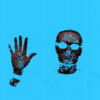Free Online Productivity Tools
i2Speak
i2Symbol
i2OCR
iTex2Img
iWeb2Print
iWeb2Shot
i2Type
iPdf2Split
iPdf2Merge
i2Bopomofo
i2Arabic
i2Style
i2Image
i2PDF
iLatex2Rtf
Sci2ools
CVPR
2007
IEEE
2007
IEEE
Detector adaptation by maximising agreement between independent data sources
Traditional methods for creating classifiers have two main disadvantages. Firstly, it is time consuming to acquire, or manually annotate, the training collection. Secondly, the data on which the classifier is trained may be over-generalised or too specific. This paper presents our investigations into overcoming both of these drawbacks simultaneously, by providing example applications where two data sources train each other. This removes both the need for supervised annotation or feedback, and allows rapid adaptation of the classifier to different data. Two applications are presented: one using thermal infrared and visual imagery to robustly learn changing skin models, and another using changes in saturation and luminance to learn shadow appearance parameters.
Computer Vision | CVPR 2007 | Data Sources | Main Disadvantages | Shadow Appearance Parameters | Supervised Annotation |
| Added | 12 Oct 2009 |
| Updated | 28 Oct 2009 |
| Type | Conference |
| Year | 2007 |
| Where | CVPR |
| Authors | Alan F. Smeaton, Ciarán O. Conaire, Noel E. O'Connor |
Comments (0)

